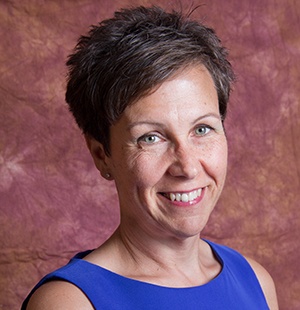Having worked in this space for nearly 20 years, this is a good time for me to reflect on significant influences in faculty development in recent years. I have focused my comments in three broad areas.
Before we get to those trends, it’s worth remembering that the quality of faculty is often what makes or breaks the educational experience for learners. Faculty who are well versed in pedagogy and tools and who have the heart for the work change the world. Investing in one’s faculty should be a priority for both the institution and the individual. The following trends give a glimpse as to why.
Accessibility, Inclusion and Open Educational Resources (OERs)
Without question, social and political trends have moved us toward inclusion. Faculty are expected to create content that is accessible to all. It’s not only about Section 508 and legal requirements but making instruction accessible to all types of learners. This applies to onground and face-to-face instruction, as well as online learning. Universal Design for Learning (UDL) has opened us to the possibilities that there are pedagogies and instructional strategies that benefit students with disabilities, and those without, equally.
Furthermore, creating an inclusive and safe environment, which is one of the guidelines in UDL, drives a good deal of what happens in higher education environments today. Although diversity training may have been prevalent in the 1980’s, we’ve come a long way toward understanding the many different nuances of who are students are. This includes gender identification, immigrant status, socioeconomics and survivorship in many forms.
Open Educational Resources (OERs) were not available in the recent past, and yet these also impact faculty development. For example, California, Oregon, Texas and Washington are leading the way toward affordable textbook adoption. The Washington State Board for Community and Technical Colleges (SBCTC) and the Washington Community & Technical Colleges Student Association (WACTCSA) partnered to conduct a survey of students. One key finding: “The cost of course materials appeared to have influence on students’ decisions on their enrollment to varying degrees. A significant number of students have borrowed the required materials from someone else (57%), many have taken fewer classes (37%) or gone to class without required materials (44%).” Faculty need resources to help them select (and author) appropriate materials for course creation and to help students manage the challenges.
Online Everything and Pedagogy
No one can argue the growth of online education in the past 15 years. Even traditional faculty who do not teach online are likely to maintain course materials and resources in a centralized course management system. At the very least, faculty interact with technology by way of entering grades in a student information system, or creating their own handouts (remember the days of departmental secretaries typing up resources for professors?). For those teaching online, the need to reskill and stay abreast of technology is a constant force. Knowing how to shift to learner-focused instruction and which pedagogies are most successful are hallmarks of a well-trained faculty.
Our Students Have Changed
We knew the demographics of students were going to change. We saw adults return to school as online learning became more popular. We anticipated more graduate students when the economy got rough and job seekers experienced greater competition. However, we may not have been ready for such a dramatic change in student communication styles. Before we fully understood Millenials, Generation Z arrived. Their communication patterns and tools are quite different from what we’ve experienced in higher education previously. Faculty need to know how to reach all learners, and this will continue to be a challenge as technology evolves.
So where do digital badges come in?
I’ll be honest, faculty development and badging could be completely separate issues. Innovative institutions that value a highly skilled faculty offer many forms of professional development. It may be an in-house, hands-on session or a subscription to a service that reaches beyond the campus. Regardless, a portable, digital credential system can be a tool for recognizing faculty who are engaged and committed. As a faculty member, I was proud to display my latest “achievement” as I learned new strategies and concepts. My three-month-old badge probably said more about me than the 30 year old doctorate to my students, as it validated that I wasn’t teaching stale information, but kept abreast of topics that were relevant to them.
The bottom line is that institutions that support and offer faculty development programs need a way to create a system of recognition. Digital badges can do that. Digital badges can recognize achievement and competencies in a portable and transparent way, thereby informing other stakeholders (e.g. students, parents, alumni) of the commitment to a quality experience for the student.
To learn more about how your organization can benefit from digital credentials, arrange a call with our team!

Dr. Susan Manning is the Chief Success Strategist at Credly. Susan strategizes with clients on how to design and implement amazing digital credential systems.
